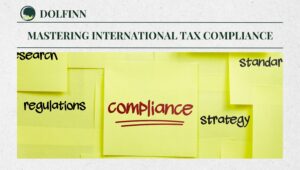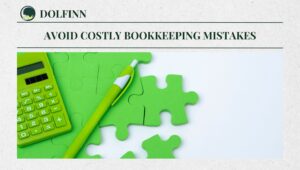
Understanding Revenue Recognition for SaaS and Software Companies under ASC 606
Revenue recognition is a cornerstone of financial reporting, and the introduction of ASC 606 for SaaS by the Financial Accounting Standards Board (FASB) has significantly impacted how SaaS (Software-as-a-Service) and software companies recognize and disclose revenue. This blog explores the nuances of applying ASC 606, common challenges faced by SaaS and software entities, and key themes for financial leaders to consider.
Introduction to ASC 606 and Its Impact
ASC 606 for SaaS, formally titled “Revenue from Contracts with Customers,” was introduced to standardize revenue recognition practices across industries. The goal was to improve comparability and transparency in financial statements. For public entities, ASC 606 became effective for annual reporting periods beginning after December 15, 2017, while private entities adopted it later.
For SaaS and software companies, the standard fundamentally changed the way revenue is recognized, shifting from rigid, industry-specific guidance to a more principles-based approach. This transition has posed challenges, including determining standalone selling prices, identifying performance obligations, and addressing variable consideration.
Core Principle of ASC 606
At its heart, ASC 606 requires entities to:
“Recognize revenue to depict the transfer of promised goods or services to customers in an amount that reflects the consideration to which the entity expects to be entitled.”
This principle is operationalized through a five-step model:
- Identify the contract(s) with the customer.
- Identify the performance obligations.
- Determine the transaction price.
- Allocate the transaction price to the performance obligations.
- Recognize revenue when or as the entity satisfies a performance obligation.
Key Themes in SaaS and Software Revenue Recognition
1. Standalone Selling Prices (SSP)
Determining SSP is a critical component under ASC 606. SaaS companies often bundle services such as software licenses, support, and implementation, which necessitates allocating the transaction price to each distinct performance obligation. Unlike previous standards, ASC 606 does not require vendor-specific objective evidence of fair value, providing more flexibility but also demanding significant judgment.
2. Hybrid Cloud-Based Arrangements
SaaS companies frequently offer hybrid solutions combining on-premises software and cloud-based services. Identifying performance obligations in such arrangements can be complex. Companies must evaluate whether the software and services are distinct and how the revenue should be allocated and recognized.
3. Variable Consideration
Contracts with variable pricing, such as usage-based fees or tiered pricing, require careful assessment under ASC 606. Entities must estimate the variable consideration using either the expected value or the most likely amount, while considering constraints to ensure the amount recognized is not subject to significant reversal.
4. Termination Rights
If customers can terminate contracts without substantive cost or penalty, only the non-cancelable portion of the contract is recognized under ASC 606. For example, if a customer can terminate at any time and receive a pro-rata refund, the contract is treated as a daily arrangement.
5. Nonrefundable Upfront Fees
Nonrefundable upfront fees, common in software arrangements, pose unique challenges. Companies must determine whether these fees are tied to the transfer of goods or services or represent an advance payment. If a termination clause exists, additional analysis is needed to decide how to account for these fees.
6. Contract Acquisition Costs
ASC 606 allows entities to capitalize certain costs incurred to obtain a contract, such as sales commissions. These costs are then amortized over the expected period of benefit. Identifying and tracking these costs requires robust systems and processes.
7. Disclosure Requirements
SaaS and software companies must provide detailed disclosures about revenue recognition. Key areas include performance obligations, significant judgments, and contract balances. “Backlog disclosures”—detailing remaining performance obligations—are particularly important for SaaS entities.
Emerging Issues and Projects
Contract Modifications and License Renewals
ASC 606 generally requires revenue for license renewals to be recognized no earlier than the beginning of the renewal period. However, modifications—such as extending a license term or converting an on-premise license to a cloud-based solution—raise questions about how to apply the standard. The FASB’s Emerging Issues Task Force (EITF) is working on clarifying guidance in this area.
Accounting for Software Costs
Entities incur various costs related to software, including development, licensing, and maintenance. Determining whether these costs can be capitalized depends on the purpose of the software:
- Internal Use: Costs may be capitalized under ASC 350-40 if certain criteria are met.
- External Sale or Licensing: Costs are evaluated under ASC 985-20.
- Cloud-Based Arrangements: Costs are treated as service contracts unless ownership of the software is transferred.
Practical Implications for CXOs
Financial leaders in SaaS and software companies must navigate the complexities of ASC 606 while ensuring compliance. Key considerations include:
- Investing in training for finance teams to understand and apply the standard.
- Implementing or upgrading systems to track performance obligations, transaction prices, and contract costs.
- Regularly reviewing and updating contracts to align with ASC 606 requirements.
Conclusion
ASC 606 has reshaped revenue recognition for SaaS and software companies, introducing both challenges and opportunities. By understanding the standard’s principles and addressing key themes such as SSP, hybrid arrangements, and disclosure requirements, companies can achieve compliance and provide more transparent financial reporting.
FAQs
1. What is ASC 606, and why is it important?
ASC 606 is a revenue recognition standard that provides a framework for recognizing revenue from contracts with customers. It ensures consistency and comparability across industries.
2. How does ASC 606 impact SaaS companies?
SaaS companies face challenges in areas such as determining SSP, identifying performance obligations, and managing disclosures. The standard also affects how upfront fees, variable consideration, and termination rights are accounted for.
3. What are performance obligations?
Performance obligations are promises in a contract to transfer goods or services to a customer. Each distinct performance obligation must be identified and accounted for separately under ASC 606.
4. Can software development costs be capitalized?
Yes, but the treatment depends on the software’s purpose. Costs for internal-use software may be capitalized under ASC 350-40, while those for external sale are evaluated under ASC 985-20.
5. What disclosures are required under ASC 606?
Entities must disclose information about performance obligations, significant judgments, contract balances, and remaining performance obligations. These disclosures provide greater transparency into revenue recognition practices.
By addressing these complexities, SaaS and software companies can not only comply with ASC 606 but also build trust with stakeholders through clear and consistent financial reporting.
Summary
Navigating ASC 606 for SaaS companies involves tackling key revenue recognition challenges like hybrid cloud arrangements, SSP, and variable consideration. This guide provides actionable insights to help you stay compliant and transparent.
Latest Posts
- Top Cash Flow Forecasting Tools You Can’t Ignore for Global Businesses

- Mastering Profit vs. Cash Flow: 5 Key Strategies for Financial Success

- 5 Key Advantages and Disadvantages of Outsourced Accounting: Is Outsourced Accounting Worth the Risk?

- Mastering Cash Flow Management in 2025: 7 Proven Strategies for Financial Success

- Mastering International Tax Compliance: 7 Crucial Strategies for Multinational Success

- 5 Common Bookkeeping Mistakes Small Businesses Make and How to Avoid Them

